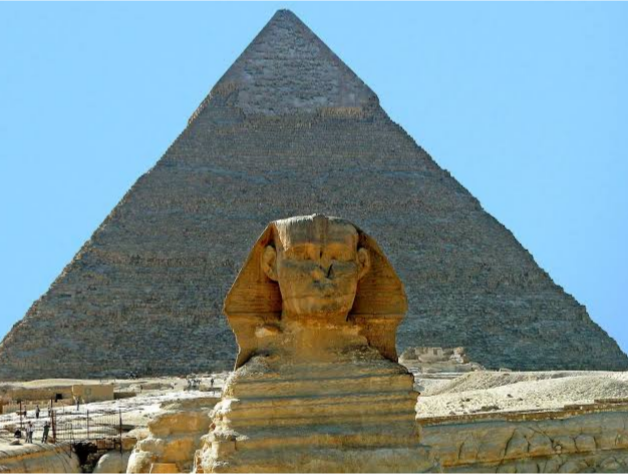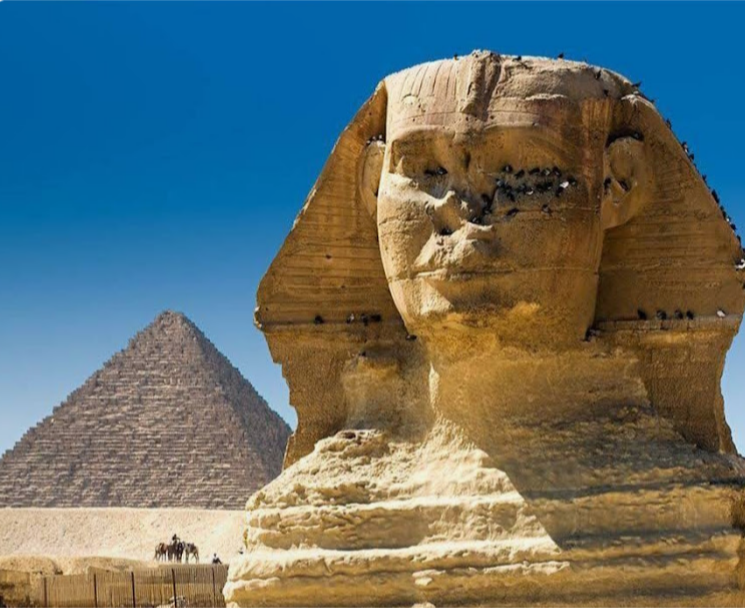
 The pyramids of Egypt entranced voyagers and heros in old times and keep on rousing marvel in the travelers, mathematicians, and archeologists who visit, investigate, measure, and portray them.
The pyramids of Egypt entranced voyagers and heros in old times and keep on rousing marvel in the travelers, mathematicians, and archeologists who visit, investigate, measure, and portray them.
Burial places of early Egyptian rulers were seat molded hills called mastabas. Around 2780 BCE, Lord Djoser's planner, Imhotep, constructed the primary pyramid by putting six mastabas, each more modest than the one underneath, in a stack to shape a pyramid ascending in advances. This Step Pyramid remains on the west bank of the Nile Stream at Sakkara close to Memphis. Like later pyramids, it contains different rooms and entries, including the entombment office of the lord.
The change from the Step Pyramid to a valid, smooth-sided pyramid took set during the rule of Lord Snefru, pioneer behind the Fourth Line (2680-2560 BCE). At Medum, a stage pyramid was fabricated, then filled in with stone, and covered with a limestone packaging. Close by at Bahshur, development was started on a pyramid obviously wanted to have smooth sides. Mostly up, nonetheless, the point of grade diminishes from more than 51 degrees to around 43 degrees, and the sides rise less steeply, making it be known as the Twisted Pyramid. The adjustment of point was presumably made during development to give the structure greater soundness. One more extraordinary pyramid was worked at Dahshur with its sides ascending at a point of fairly north of 43 degrees, bringing about a valid, yet squat looking pyramid.
The biggest and generally renowned of the relative multitude of pyramids, the Incomparable Pyramid at Giza, was charged by Snefru's child, Khufu, referred to likewise as Cheops, the later Greek type of his name. The pyramid's base covered north of 13 sections of land and its sides rose at a point of 51 degrees 52 minutes and were more than 755 feet in length. It initially remained more than 481 feet high; today it is 450 feet high. Researchers gauge that its stone blocks normal more than two tons each, with the biggest gauging as much as fifteen tons each. Two other significant pyramids were worked at Giza, for Khufu's child, Ruler Khafre (Chephren), and a replacement of Khafre, Menkaure (Mycerinus). Likewise situated at Giza is the popular Sphinx, an enormous sculpture of a lion with a human head, cut during the hour of Khafre.
Pyramids didn't remain solitary however were important for a gathering of structures which included sanctuaries, houses of prayer, different burial chambers, and enormous walls. Leftovers of funerary boats have likewise been uncovered; the best saved is at Giza. On the walls of Fifth and 6th Line pyramids are engravings known as the Pyramid Texts, a significant wellspring of data about Egyptian religion. The shortage of old records, notwithstanding, makes it challenging to make certain of the purposes of the multitude of structures in the pyramid complicated or the specific entombment strategies. It is believed that the ruler's body was brought by boat up the Nile to the pyramid site and likely embalmed in the Valley Sanctuary prior to being put in the pyramid for entombment.
There has been hypothesis about pyramid development. Egyptians had copper apparatuses like etches, penetrates, and saws that might have been utilized to cut the somewhat delicate stone. The hard rock, utilized for entombment chamber walls and a portion of the outside packaging, would have represented a more troublesome issue. Workers might have utilized a grating powder, like sand, with the drills and saws. Information on stargazing was important to arrange the pyramids to the cardinal places, and water-filled channels most likely were utilized to even out the edge. A burial chamber painting of a monster sculpture being moved shows the way that immense stone blocks were continued on sledges over ground originally made tricky by fluid. The blocks were then raised slopes to their situations in the pyramid. At long last, the external layer of packaging stones was done starting from the top and the slopes destroyed as the work was finished.
A large portion of the stone for the Giza pyramids was quarried on the Giza level itself. A portion of the limestone packaging was brought from Tura, across the Nile, and a couple of the rooms were cased with stone from Aswan. Signs of the quarry laborers are viewed as on a few of the stone blocks giving names of the work posses, for example, "craftman-pack". Parttime groups of workers most likely enhanced the all year bricklayers and other gifted laborers. The Greek student of history Heroditus revealed in the fifth century BCE that his Egyptian aides let him know 100,000 men were utilized for 90 days per year for a long time to construct the Incomparable Pyramid; current evaluations of the quantity of workers will generally be a lot more modest.
Pyramid building was at its range from the Fourth through the 6th Traditions. More modest pyramids kept on being worked for more than 1,000 years. Scores of them have been found, yet the remaining parts of others are likely still covered under the sand. As plainly the pyramids didn't give security to the preserved groups of the rulers yet were clear focuses for grave burglars, later lords were covered in secret burial places cut into rock bluffs. Albeit the brilliant pyramids didn't safeguard the assemblages of the Egyptian rulers who fabricated them, the pyramids have effectively kept the names and accounts of those lords alive right up to the present day.